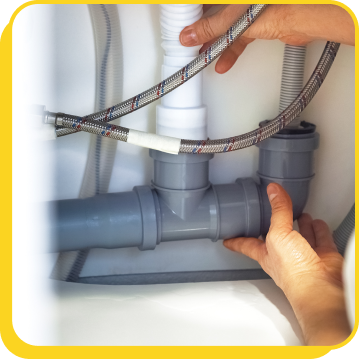Have you ever lied awake at night wondering “What happens to my household plumbing waste once it leaves my house?” If you’re like most normal people, you probably have not. Most people just flush their toilets, or they flip on their garbage disposals, and they never think about what they’re doing again.
Understanding the journey your waste takes is important, though because it may teach you something useful for your future. If this interests you, keep on reading to find out how household waste is treated by several different methods, including septic tanks, sewer plants, cesspools, and electrical plants!
How do Septic Tanks Work?
Septic tanks are an excellent option for waste disposal if you happen to live in a rural area, where city pipes don’t reach.
These systems are made up of two basic parts: the tank and the drain field. The tank is where your waste collects and becomes separated into solid waste, oils and grease, and effluent.
Solid waste and grease stay behind in the tank, as the effluent passes through filters on its way to the drain field. In the field, the minerals in the soil naturally treat the water, returning it to groundwater.
Sewer System Treatment
If you live in a more urban area, your home is connected to your city’s municipal sewer system.
That means that upon leaving your house, the waste from your home flows into the main sewer pipe that runs right down the middle of your street.
From there, the wastewater travels through a system of city pipes until it finally arrives at the central sewage plant. Once at the plant, the wastewater will go through anywhere from one to three treatments. The first is called Primary Treatment, and it works like a septic tank, separating solid waste from the wastewater.
If the water continues onto secondary treatment, it is then pumped into an aeration tank, where live bacteria will be introduced into the tank to eat up all the nutrients and other organic material in the water.
This stage typically removes more than 90% of the harmful contaminants in the water. If your city plant has three treatments, then tertiary treatment is next. In this stage, chemicals like chlorine are added to the water to kill any remaining bacteria and remove things like phosphorus and nitrogen from the water.
What Other Waste Disposal Options Are Available to You?
Gravity drains move sewage away from your home on a downward slope so gravity is the main force in moving the sewage.
When gravity drains are used, pumping stations (or lifting stations) are often used to lift wastewater when it needs to get into a higher pipe or the treatment plant.
Electric sewage treatment uses electronic rotating discs, pumps, or air blowers to aerate the wastewater during secondary treatment.
The difference between a Cesspool and a septic tank is just that a cesspool doesn’t require a drain field to treat the water. The effluent, instead, filters right through the brick or cement blocks that line the pit, and into the soil around the pit.
Call Duane Blanton Plumbing, Sewer, Heating & Cooling today for drain and sewer cleaning services in Round Lake, IL!
